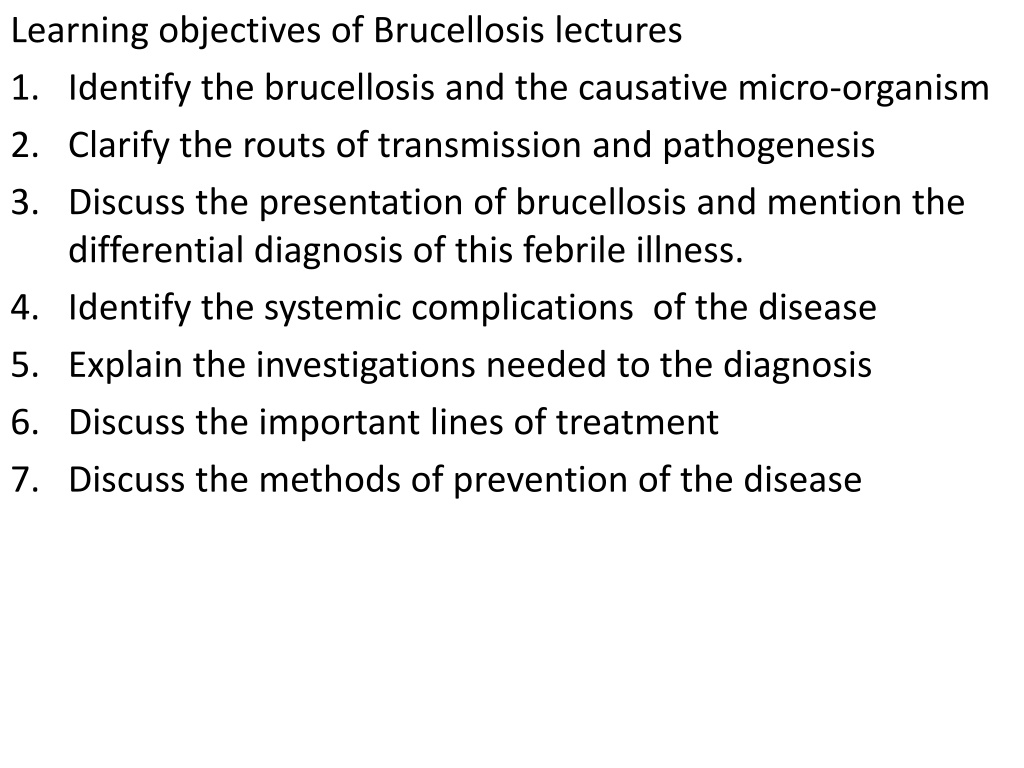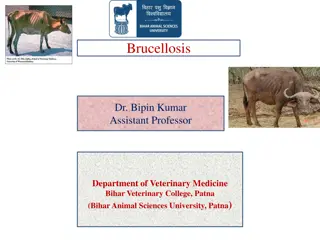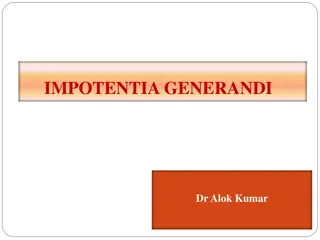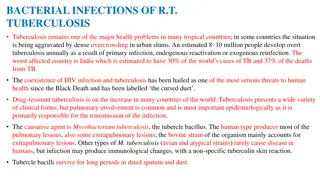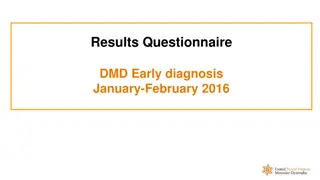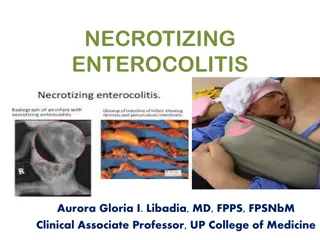Comprehensive Overview of Brucellosis: Causes, Transmission, Diagnosis, and Treatment
Brucellosis, also known as Malta fever or Mediterranean fever, is a systemic bacterial infection caused by Brucella species. This overview covers the identification of the disease, its transmission methods, clinical presentation, complications, diagnostic investigations, treatment options, and prevention strategies. Important topics include the causative microorganism, routes of transmission, symptoms such as fever and body aches, chronic manifestations, differential diagnoses, and more.
Download Presentation

Please find below an Image/Link to download the presentation.
The content on the website is provided AS IS for your information and personal use only. It may not be sold, licensed, or shared on other websites without obtaining consent from the author. Download presentation by click this link. If you encounter any issues during the download, it is possible that the publisher has removed the file from their server.
E N D
Presentation Transcript
Learning objectives of Brucellosis lectures 1. Identify the brucellosis and the causative micro-organism 2. Clarify the routs of transmission and pathogenesis 3. Discuss the presentation of brucellosis and mention the differential diagnosis of this febrile illness. 4. Identify the systemic complications of the disease 5. Explain the investigations needed to the diagnosis 6. Discuss the important lines of treatment 7. Discuss the methods of prevention of the disease
Brucellosis Malta fever, Mediterranean fever Undulant fever, Undulant fever, Gastric fever Gastric fever
Brucellosis Brucellosis Species Natural Host B. abortus cattle B.melitensis goats, sheep B. suis swine B. canis dogs, other canids Systemic bacterial enzootic infection caused by: Brucella sp. Gram negative coccobacillus
Transmission 1. Ingestion unpasteurized milk/raw dairy products, uncooked meat 2. Contact with infected farm animals or its products as in slaughterhouse , meat-packing , plant employees, veterinarians.
Clinical features The acute illness : start few days up to three months 1) Fever : the most common symptom, with high "spikes" that usually occur in the afternoon with night sweating rigor. 2) Back pain& Body-wide aches and pains. 3) Poor appetite and weight loss. 4) Headache. 5) Weakness. 6) On Exam : 1- enlarged lymph nodes & spleen hypersplenism and thrombocytopenia 2- Tender Sacroiliac and spine
Chronic Localised infection 30 % : 1. chronic fatigue , depressive episodes, arthritis 2. Neurobrucellosis meningitis, stroke, haemorrhage uveitis , Retinal thrombophlebitis Cranial nerve palsy Myelopathy 3. Heart Endocarditis , myocarditis
4. Hematological : Pancytopenia splenic abscess hilar lymph. Node 5. Skeleton : Suppurative arthritis Spinal spondylitis or sacroilitis and Paravertebral abscess Osteomyelitis
Differential diagnoses of Brucellosis Lymphoma Tuberculosis Infective endocarditis Malaria Infectious mononucleosis HIV infection Depression Leishmaniasis and Relapsing fever
Diagnosis in Humans 1. Culture Blood, 2. Serology like RBT, tube agglutination and ELISA 3. PCR 4. X-ray : erosion of antero-superior corner of lumbar vertebrae) marked osteophytosis. Center for Food Security and Public Health, Iowa State University, 2012
KEY POINTS ON THE DIAGNOSIS OF BRUCELLOSIS 1. In acute brucellosis, isolation of Brucella from blood or other tissues is definitive , 2. Culture is often negative, especially in long-standing disease. 3. Serology is the most generally useful diagnostic procedure approach. 4. Methods which differentiate IgM and IgG can distinguish active and past infection. 5. False positive serological reactions may occur. 6. Skin test reactions indicate past exposure not active infection
Treatment 1. Mild cases : doxycycline and rifampin -- for 6 weeks . 2- Sever cases: 3 drugs Getamicin + dox. + rifamp. For 8 weeks. 3- Pregnancy and children : Co-trimaxazole + rifampicin for 8-12 wks
Prognosis _ Rarely fatal <2% (untreated) Antibiotics necessary Death usually caused by : Endocarditis meningitis Center for Food Security and Public Health, Iowa State University, 2012
